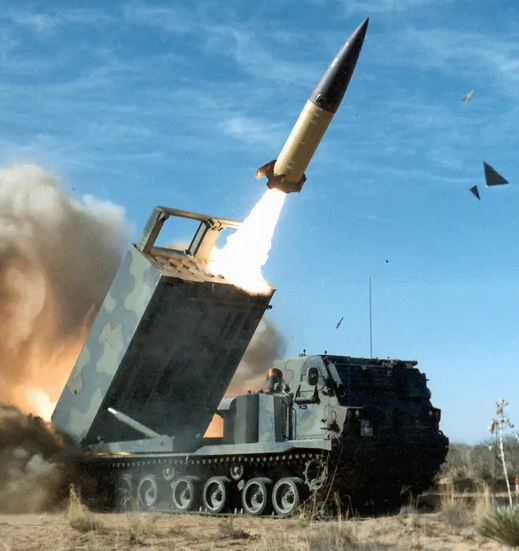"High-altitude winds between 1,640 and 3,281 feet (500 and 10,000 meters) above the ground are stronger and steadier than surface winds. These winds are abundant, widely available, and carbon-free.
"The physics of wind power makes this resource extremely valuable. “When wind speed doubles, the energy it carries increases eightfold, triple the speed, and you have 27 times the energy,” explained Gong Zeqi "
This is totally breaking loose and heading toward the nearest city in the final act.
Very cool, and definitely worth switching too where it makes sense.
But there is no mention of cost, so it probably won’t be cost competitive with regular wind for a while, which sucks.
But the silver lining is that this is among the first of this type of power generation, and it will only get better and more efficient as the tech is built upon.
They did mention 30% cost savings. (these claims are easy to exaggerate though) While already useful scale, the advantages would grow with higher scale and high volume automated production.
Incredible progress on a concept that has been seeking investment for last 15 years. It doesn’t just provide 1.2mw, it also operates at a higher capacity factor than capturing winds closer to ground. I’m sure it can scale even higher.
This is useful for clean energy shipping. Design supports an unthethered airship that produces H2 and transports it at the same time. I believe the design would support forward momentum directly upwind, but some tacking angle would be supported.
This is not just a breakthrough in wind energy generation, it is a breakthrough in airship capability.
…produces H2?
electrolysis of water (partially from starting water reservoir, and partially from air humidity = dehumidifier step), can displace water weight with increased H2 pressure in airship. Can put an infinite amount of these over ocean with no land lease costs, but moving giant ships solves the issue of thethering them.
An untethered AWE cannot produce any power
Contentious. Thethering increases power production by restricting the “sail movement power”. The blimp part is highly/perfectly aerodynamic, and the betz limit means that a turbine does not fully “act like a parachute”. Ground vehicles that proved faster than wind speed directly upwind could use similar principle to turn a propulsion prop, that increases forward/apparent wind speed generating more power.
This relates to same incredulity for faster than wind upwind ground experiment, and needs experimental proof. But principles of sailing are indeed magical, and simply generating enough power to move forward is extremely useful, even if tacking were needed.
In all your examples there is the ground to provide a counteracting force. Maybe I am misunderstanding what you mean by untethered, but any initial airspeed difference between the wind and your system will eventually vanish and you’ll move along with the surrounding air.
I co-founded an AWE startup 8 years ago and let me tell you, literature does not support your claim.
Meanwhile in the US, rich assholes are firmly convinced coal and oil are the future.
God I hate this place.
To be fair, coal and oil are narratives are being pushed by foreign actors too on the US. China knows exactly how to win a race, and step 1 is to tie your opponents’ shoe laces.
It’s late stage capitalism.
These fools are just hoarding what they have and trying to continue the « golden age ».
China will be the next superpower for sure
Also, it looks cool as fuck!
When wind speed doubles, the energy it carries increases eightfold,
Huh? Kinetic energy increase is square, not cubic.
KE=1/2 m v^2
So every doubling of speed should increase the available kinetic energy by 4 times, not 8. 3 times the speed is 9 times the energy. Granted there are probably some efficiency gains in excess of this at the low end, but as a rule that’s just wrong.
I’m out of practice with my physics so apologies if this is a n00b question, but:
I’m unclear what (rho V) is and how you converted to that from mass (m). Further unclear what (rho A d) refers to.
Can you explain / link to an explainer on this?
Rho is density
We don’t directly harvest the kinetic energy. That increase probably has to do with how the wind provides lift to the blades. Of course, you couldn’t keep increasing like that until the harvested energy is greater than the kinetic energy. But I’m sure at any wind speed we only get a tiny fraction.
Kinetic energy is exactly what’s harvested, which is why modern wind turbines are not far off the theoretical limit of the amount of energy that can be extracted. (Betz’s law)
By taking energy from wind, you slow it down. Slow it down too much, and it can’t get out of the way in time for new air.
I could have stated it better. What I meant was that the fraction of kinetic energy that is taken from the wind is so small that the total kinetic energy in the wind is probably not the important factor that changes with wind speed. The dynamics of how the lift depends on wind speed is probably much more important.
It is actually a notable fraction (~60%) and more importantly constant.
Meaning if your wind has 27x more energy, you can also capture 27x more energy.This is the energy taken from the wind passing through the disk the turbine spins in, so turbines are placed in spaced out rows to let the wind mix with all the air that didn’t pass through a turbine and pick up speed again.
Increasing the speed increases both the kinetic energy of the wind hitting the turbines and the amount of wind that hits the turbines each second.
It has to do with type of turbine that uses “airfoil principle”. Your formula works for “cup”/Parachute design, but airfoils/upwind sails are “magic”
Its cubic actually
https://thundersaidenergy.com/downloads/wind-power-impacts-of-larger-turbines/
I don’t understand the physics, but every model of power output from wind turbines uses V^3 for the formula
Thanks for the correction! I got way ahead of myself.
thx for the link! just spent the last hr reading about windmills. and although I live in a country full of them I’ve often wondered, but never really paused to ponder about the intricacies that go into windmill design. fascinating stuff!
I work with statistics and joined a wind power forecast project, so I have been reading papers on wind power generation for the past month. There’s other more complex formulas that the one shared on the link, but that was the first I found not pay walled.
That’s a good link.
During the stampede scene in the Lion King, imagine the wildebeests were stampeding twice as fast. Then Simba’s dad Mufasa would not only have quadruple the amount of energy imparted by each wildebeest, but also be trampled by twice as many wildebeests per second, so the rate of energy imparted on Mufasa per second would be 4 x 2 = 8 times greater when velocity doubles.
Education via childhood trauma
1,640 and 3,281 feet (500 and 10,000 meters)
I feel like this needs a second look.
So those units didn’t scale right, clearly. But you also can’t possibly call those “high altitudes”. Small planes like cessnas fly at low altitudes, like 5000 ft, a 747 flys at a high altitude, 40,000 ft; 1600 ft is nothing, that’s lower than some buildings.
Agreed. I had the same thought and then saw the numbers and was like wait, “which part of this is the fucked up part?”
they’re talking about the extra 0 on 10,000
I did catch that, I was just pointing out there are additional problems with the statement as well. But I’ve edited my statement to make that more clear.
They used different people’s feet.
Chinese feet are smaller.
The zero key got stuck.
As a European… Are feet logarithmic? Wouldn’t even surprise me that much.
Only when viewed from the north.
And on Tuesdays.
No, but feet are analogue. Hands are digital.
That looks like a giant…
Austin Powers sketch
500 to 1,000 meters AGL is going to be a problem for aircrafts. You need remote areas to have no interference bc these are big balloons.
Paint the balloons red and put lights on them so aircraft don’t hit them.
Why red? Paint it like a brick wall so they can pass through.
Why red?
Because it makes the blood stains less noticeable.
/s
This is intended as emergency power relief not a full time energy source.
Hmm interesting. I don’t see how it could be economical as an emergency-only power source. To build them and store them for occasional use seems pretty unappealing. Surely if you had them, you’d use them to generate electricity/passive income.
You could think of them as easily mobile power systems, available to respond to emergencies, but used wherever is convenient the rest of the time.
So yeah, they’ll still be a hazard for air traffic, but luckily we do have an established solution for that, the blinking red light. Also, controlled airspace around airfields.
The article literally says its for earthquake relief which absolutely makes sense. The lines are down and power is needed for emergecy operations and I can see how this would be useful.
Yeah, I get how that’s their intended use, I’m just saying I have my doubts about that business model. If this is their pitch, I don’t think they’re gonna sell many.
The thing is, they will be expensive. And it’s not an expensive service, it’s an expensive product. A state or a nation will have to buy a bunch of these, likely for hundreds of thousands each. And then just sit on them millions of dollars worth of energy infrastructure just sitting around not generating energy… Then when it’s time for them to be deployed you have a whole bunch of government workers saying “uh, I’ve never set one of these up, where’s the user manual?”
If instead you had them in regular use, when it comes time to deploy them in an emergency, you’d have people who actually know how to use them. Plus you could be generating power with them wherever extra power might be needed.
Air traffic has to adapt.
Finally the stupid floating jet engine looking turbines from Big Hero 6, except IRL they actually look good.

With a traditional wind turbine, if the wind speeds get too high, the turbine locks the rotation and feathers the blades. For the airship however, people will have to manually take it down and later erect it again. Hopefully they get to it in time, otherwise it’s going to violently take itself down and/or fly off. Either way, that is a bunch of extra cost incurred on a regular basis.
Strikes me as an impractical solution.
Article says wind speeds are môre steady up there, wouldn’t that mean whatever you put up there is build to withstand those winds?
A wind turbine automatically feathers. Why can’t the airship automatically raise and lower itself?
With modern forecasting, getting it’s height right shouldn’t be too hard?
Why can’t the airship automatically raise and lower itself?
It doesn’t just need to be lowered, that would leave it exposed still. It needs to deflated/reinflated every storm, while also having someone strap the carefully folded deflated bits down, or put itself into a very expensive massive hangar every storm. Are these possible, yes, but again, it needs to be economical, not just possible.
Weather has always been a severe issue with airships. It’s the main reason you don’t see them filling the sky.
Does the article actually list the target altitude for this version?
I think I was imagining something much higher. You’re probably right.
They’re trying to get it to100kW. That’s like a pretty big generator but not a huge one. So this isn’t a replacement for wind farms just yet. The picture is from a year ago. No mention of costs.
Would it be possible to use heat to get it to float, instead of helium? Heat it up with electricity.
Would it be possible to use heat to get it to float, instead of helium? Heat it up with electricity.
Sure, that would be possible. The generators themselves will produce a fair amount of heat. It’s also going to have a fair amount of passive lift, as it’s essentially a kite. So simply being able to maintain a rigid shape and effective airfoil will do a lot to produce the desired lift.
I have to wonder though, how much the power transmission lines weigh, that seems like a serious limiting factor on maximum attainable altitude.
The transmission line question is interesting though, there’s a complex optimization problem there. Traditionally with wind, larger turbines are more efficient. As you increase the turbine blade size, the area that the blades cover (and thus power generation potential) increases more than the mass of the blades do. So the result is (generally speaking) a larger wind turbine is more efficient than a smaller one. But now factor in the transmission line… The larger the turbine the more power it generates AND the thicker (and heavier) the transmission line has to be for its entire length. To complicate things more, higher altitudes mean stronger and more reliable wind. So now how do you optimize for turbine size/cable gauge, and cable length/altitude?
It seems tricky, but like perhaps there’s just a right answer, an optimal size.
Can they preference the generation to favor voltage over current? Current is what tends to need really thick cables.
The article says:
The S1500 features a main airfoil and an annular wing that together form a giant duct. Inside this duct are 12 turbine-generator sets, each rated at 100 kW.
That suggests to me (admittedly a layman) that each blimp is more like 1.2MW?
Sorry about that, I got all excited at just a tenth of what they are trying to achieve. Oops
It’s all good mate, we’ve all got over excited at times.
The title itself already says it’s 1MW.
[face Palm].
JFC people, take a grade 10 physics class.
How about you take a ninth-grade speech class first?
Using hot air instead of helium would not work. The density of hot air is much higher than helium, so you would need a significantly larger airship to lift the same mass of payload (the useful bits). That and keeping the air hot would require constant energy input reducing the efficiency of the system dramatically. I’m pretty sure that system would be literally impossible to construct.
Hydrogen is simply the right lifting gas. Helium not abundant enough for sustainable scale. AFAIK, this model did use H2. Previous protototypes used helium.
it is 1.2mw = 12x100kw
Did they actually generate power during the teat flight?
“demonstrated 1mw production” from other sources.
I cant wait for the conspiracy theories about this
This looks like a good way to bring power to a remote area, and China has lots of those.
Am I crazy or didn’t we see these in Big Hero 6?
Yes but, you see, that was an animated film aka a work of fiction. This is happening in reality.
a l a l a l a l h a BKinda.
I like how everyone conveniently leaves out the part that this is an emergency backup not actual full time scalable tool.
This one in particular: maybe.
The approach in gerenal: not so much.
Have a look here: https://skysails-power.com/systems/venyo/The one you posted is not for scaling either. I just dont see how this maintenance overhead could ever scale for mass use.
I don’t know what you mean by mass use. It’s pretty clear that these approaches are meant to add to existing solutions or provide off-grid energy at remote locations.
If you can bring a standard 30 foot container there, you can consider such a kite installation, if other requirements are met.How does an ideal site look like?
Q3: How does an ideal site look like?
The ideal site has a flat topography with no large obstacles in the prevailing wind direction, making agricultural or unused land the ideal choice. However, certain obstacles, like trees, solar power plants, or industrial facilities, are acceptable within the operating area, but specific approval may be required. We are happy to support you in identifying the perfect site for your airborne wind energy project.I don’t see, you can’t use multiple installations at different locations aka scale it.
Basically every other option will almost always be better, no? I guess we’ll see as someone actually brings some of these to the market but my guess would be that this is not going to go anywhere.
I can see those kites being used at remote locations, islands, remote villages, etc.
Add some battery to it and you have a quite reliable source of electric energy.
What option would be better in these cases in your opinion?I live in remote locations as a digital nomad and this would never really work. The maintenance overhead of even normal ground wind turbines is too much for remote areas. Solar and battery storage is really unbeatable.
Some new generation wind turbines can be decent ive heard but there are also small novel solutions like mini water turbines can be surprisingly useful.
Neither the kite based solution nor the blimp based solution is fit for the purpose of serving single or few people with electrical energy.
For that scenario some kWp based on solar can be had for cheap and some kWh battery on top doesn’t cost a fortune either.
I never insinuated that the kite or blimp are the perfect solution for every scenario - rather that it may be a match for situation that couldn’t be served well by the available means.
Very interesting development. Especially that it can be deployed in disaster zones to provide energy - if there is a strong foundation to anchor it, probably.
Wouldn’t the heavy transmission line itself act as the anchor like the chain on a cruise ship?



















